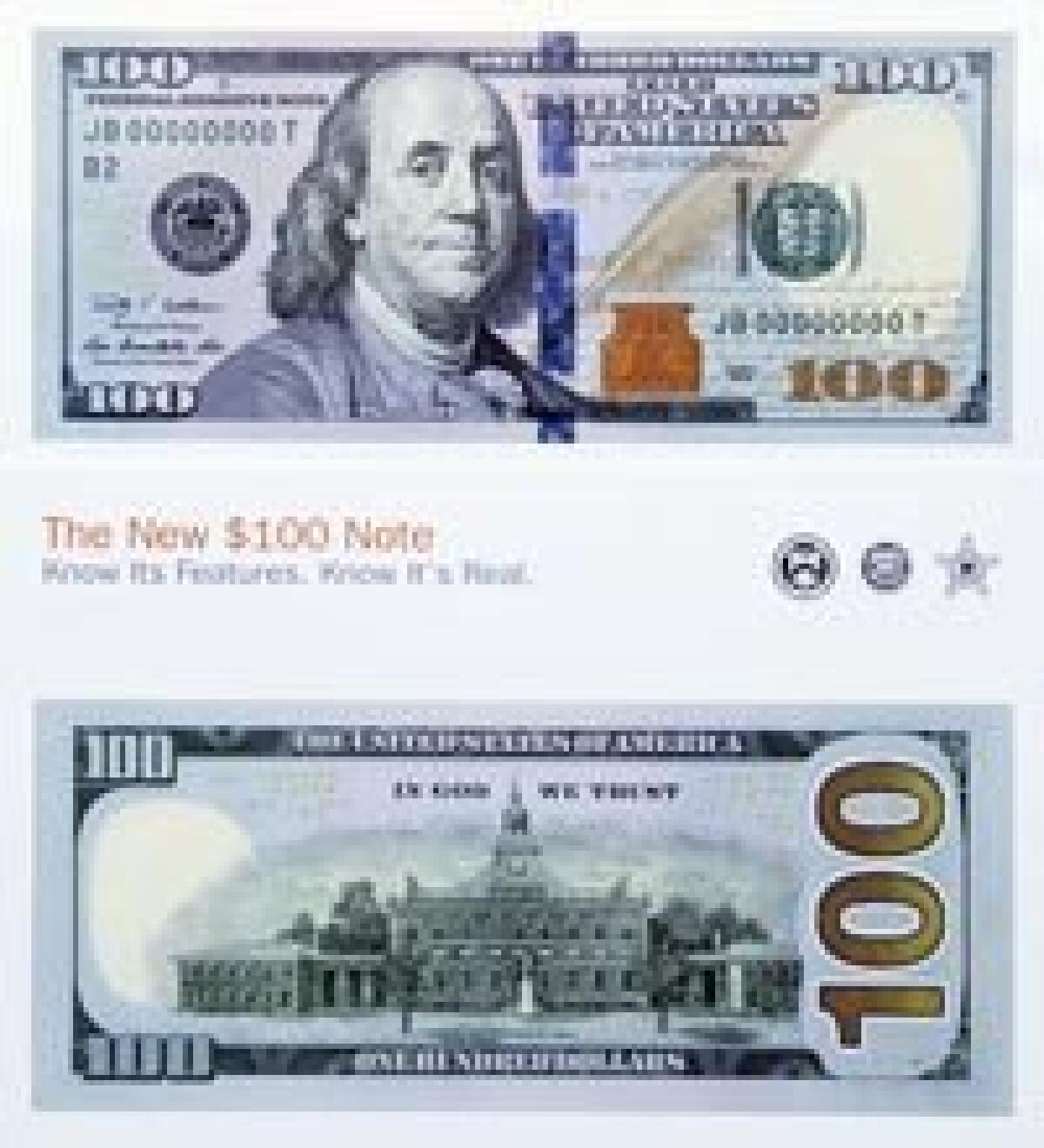5 things you need to know about: the new $100 bill

The almighty $100 bill got a fancy new look this week, replete with a bunch of snazzy security-minded whistles and bells. (Seriously, there are bells everywhere on the thing.) Looking for the details on the new loot? Read on.
What are the differences? There are a bunch. There’s the 3-D security ribbon, which contains images of bells and 100s that transform into each other as you tilt the bill. (Sheesh, does everything have to be in 3-D nowadays? Darn you, James Cameron.) There’s also an orange inkwell that has, you guessed it, a bell that changes from copper to green, depending on how you angle the bill.
Anything else? Like we said, there are a bunch of differences ranging from the bill’s color — a subtle blue — to a much larger portrait of Ben Franklin. On the back, there’s a big, gold “100” to help those with visual impairments see the bill’s amount with greater ease. For those who like to squint, there’s microprint, which is just really, really small type. For instance, along Franklin’s lapel, it says “United States of America.” There are two other pieces of microprint. Try to find them. (Need a hint? Go to www.newmoney.gov.)
Is anything the same? Of course. Ben Franklin is still the man, and the bill is still made out of the traditional formula of one-quarter linen and three-quarters cotton. The look, the feel of $100 cotton — nice. There are also some old-school security features, including a watermark that reveals another portrait of Franklin when held to the light, a security thread that gives off a pink light in ultraviolet light, and a color-shifting numeral.
Are my old C-notes still good? Why yes, they are. Despite the new design, the 6.5 billion old $100 bills remain legal tender. By the way, we’re more than a little jealous that you have $100 bills in your possession.
Why the change? I liked the old bill. So, apparently, did foreign counterfeiters. While counterfeit money is pretty rare — like a hundredth of 1 percent rare — the $100 bill is the most widely circulated U.S. currency internationally and the most counterfeited. The U.S. Treasury said it took 10 years to come up with the new bill. It might be a bit garish, but apparently security was more important than looking pretty.